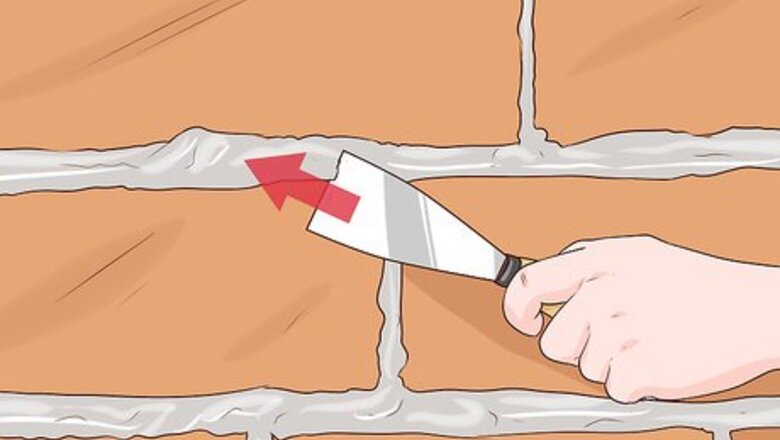
views
Cleaning off Wet Mortar
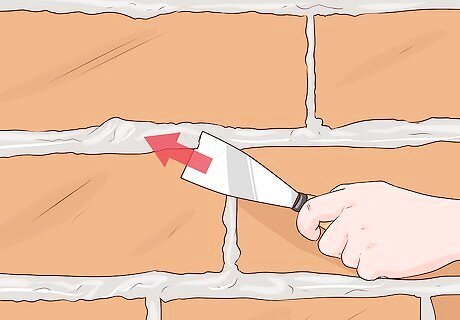
Use the edge of a trowel to even out the mortar with the wall face. Use a forward lifting and rolling motion with the short edge of your trowel to even out the mortar with the face of the brick. Continue to do this as you lay new bricks to prevent mortar from bunching up and creating large chunks on the bricks. You can also use a large, clean sponge to even out the mortar with the face of the bricks.
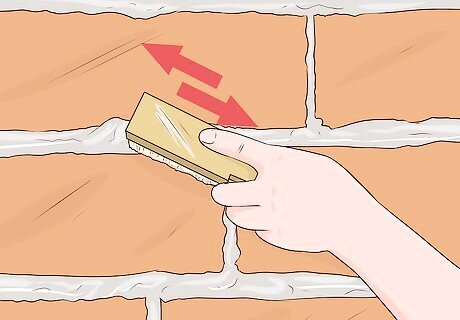
Rub off remaining mortar dust with a medium-soft bristle brush. The goal is to brush away dust on the face of your brick rather than wiping the mortar dust deeper into the brick. Avoid pressing down on the brush and wipe away from the surface of the brick. Use a back and forth motion until the mortar dust on the face of your wall is removed.
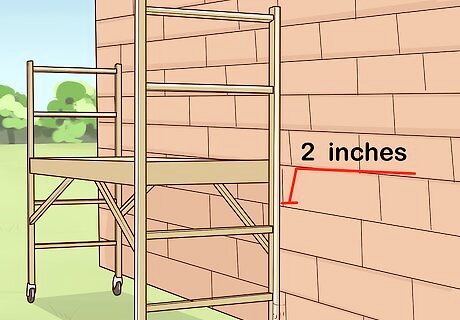
Set up a scaffold 2 inches (5.08cm) from the wall to prevent mortar splatter. A scaffold should be set up 2 inches (5.08cm) from the wall to prevent mortar splatter at the base of your wall. Scaffold boards that are closest to the wall should be angled away and slightly downward from the wall.
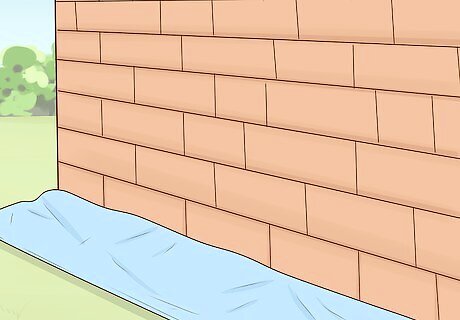
Protect the base of your wall with a drop cloth or plastic sheet. Lay down straw, fabric drop cloths, or plastic sheeting on the base of the wall to prevent mortar drippings from staining the base of your wall. These drop clothes should extend 3 to 4 feet (91.44 cm) from the base of your wall. You can also use plywood or oriented strand board. If any mortar drips on the wooden boards, you can reuse it as long as it didn't get dirty.
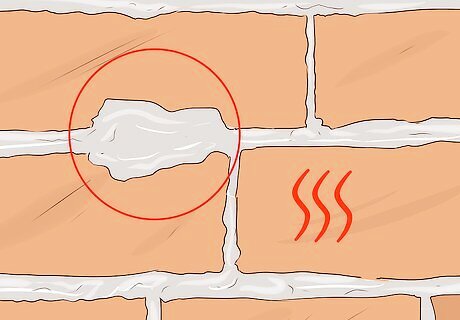
Allow larger clumps of mortar to dry before removing them. If you take all of these precautionary measures, but large clumps of mortar still end up on your wall, you should allow them to dry and then attempt to remove them using the chisel or acid method.
Removing Dry Mortar with a Chisel
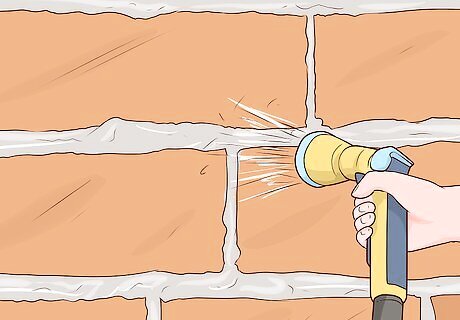
Wet down the brick with a garden hose. Ensure that the mortar has had at least 7 days to dry before trying to remove the dried on mortar. Saturating the wall with water before you chisel will make removing the mortar easier and can protect your bricks from being damaged. Fully saturate the brick before you start working with a garden hose or with buckets of water.

Tap the chisel parallel to the brick to remove excess mortar. Hold the chisel at a 20° to 30° angle against the face of your wall on areas that have built-up mortar. Lightly tap on the end of the chisel and start to break the dried up mortar from off the wall. Start from the top and work your way to the bottom. Continue to work slowly and carefully until most of the mortar is removed from the wall. Break up larger pieces of mortar into smaller more manageable pieces instead of trying to remove it all at once. Lime mortar is easier to remove than cement based mortar using this method.
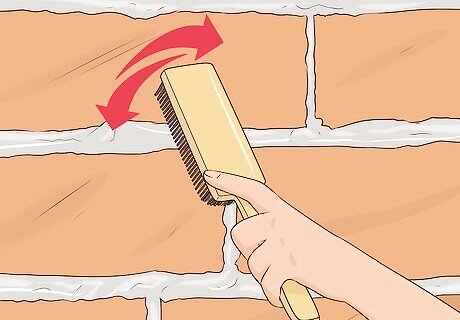
Wipe off excess mortar with a hard wire brush. Go in a back and forth motion over the face of the brick to remove any broken up mortar dust. Try to scrape off any stubborn mortar that wasn't removed from chiseling. Do not spend too much time in one area or you may discolor the brick in that area.
Get matching mortar from a supplier if your mortar is cracked or damaged. Use a chisel or a hard brush to remove a piece of mortar and take it to the nearest brick supplier. The supplier will be able to match the color and consistency so you can mix more. Mix your mortar and fill in any damaged areas using a mortar bag. Allow the mortar to harden for 20 minutes before shaping it with a jointer tool.
Using Muriatic Acid to Remove Dried Mortar
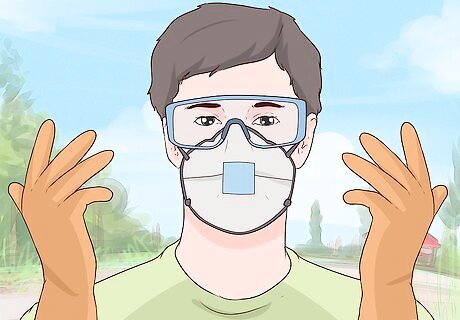
Wear the proper safety equipment. Muriatic acid is very toxic and caustic, so it's important that you follow the proper safety precautions when using it. Wear acid-proof gloves, goggles, closed-toe shoes, protective clothing, and a NIOSH-approved respirator equipped with the appropriate acid-grade filter when working with acid. You can find this safety equipment at the hardware store or online. Lay plastic sheets down at the base of the wall to act as drop cloths for the acid. Keep a box of baking soda around to pour it on yourself if acid splashes onto your skin. Caustic chemicals from the muriatic acid could cause chemical burns.
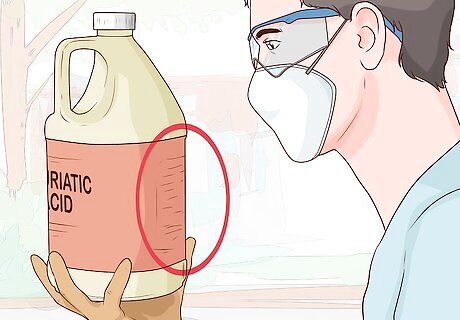
Read the instructions on the back of the acid. Read the information and warnings provided with the product that you've purchased. Follow the dilution amounts and process on the back of the packaging. Typically, you'll want to create a solution that is one part muriatic acid to nine parts water. Never mix muriatic acid with other chemicals. Do not use acid for lightly colored or cream-colored bricks. The acid can discolor them and weaken their joints.
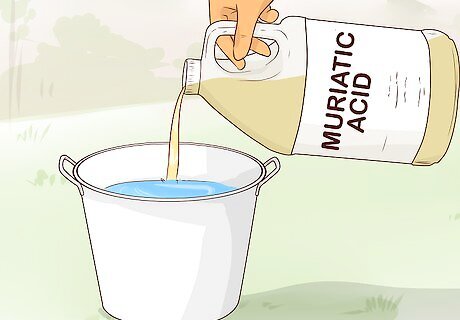
Dilute the muriatic acid. Fill an acid-resistant bucket up with water first, then add the muriatic acid. This will prevent splashback which could potentially spray acid onto you.
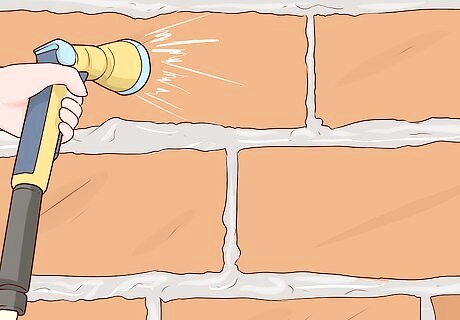
Wet down the brick with water. Before you apply the acid to the wall, it's important that it's fully saturated with water. Applying the muriatic acid directly on a dry brick may damage your wall.
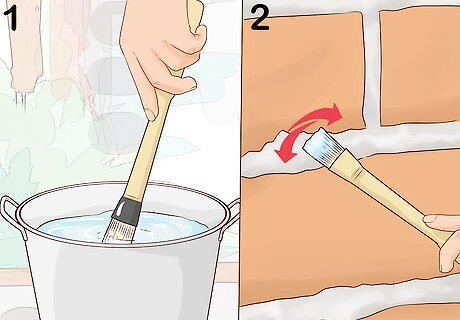
Apply the acid with an acid-resistant brush. Purchase an acid resistant brush online so that the bristles don't disintegrate while you apply it to the brick. Dip the brush into the acid solution that you created and apply it in a layer over a small portion of the brick that you want to clean. Apply the acid in a small area to make sure that there isn't an adverse reaction with the brick in your wall.
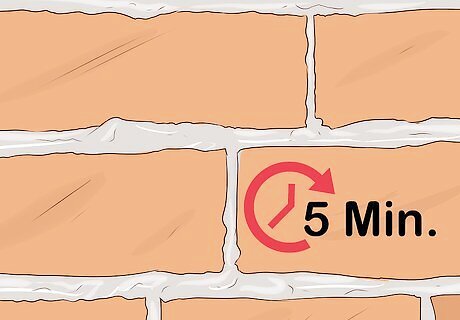
Let the acid sit for five minutes. Allow the acid to soak into the mortar on the bricks and break it down. If the acid is working, it will start to bubble and fizz when it comes into contact with the mortar. Do not let the acid fully dry on the brick or it could damage them. If you notice that there is discoloration on the brick, stop using the acid.

Scrub the mortar away with a brush. Use a medium bristle brush and scrub the face of the brick vigorously. Avoid scrubbing in the joints of the brick or you may weaken the mortar that holds the brick in place. Scrape the sludge that's created from the mortar and acid onto your drop cloth. Continue to scrub until all of the dried on mortar is removed.
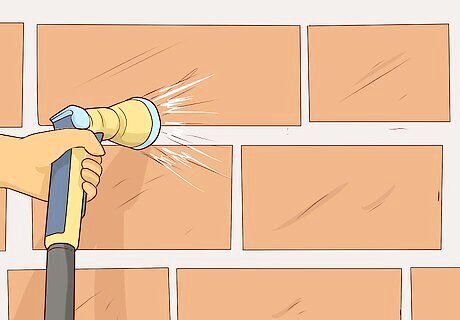
Rinse the acid off with several gallons of water. As you work, make sure that none of the acid dries to the brick. Dried acid can weaken the brick and discolor it. Always keep a garden hose or a bucket filled with water close by and rinse away the acid after you're done scrubbing away the mortar. Once the acid is thoroughly washed away, store the leftover acid somewhere that children and pets won't be able to reach it.




















Comments
0 comment